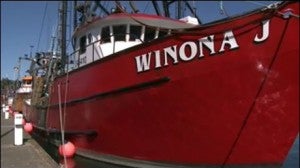Marine Resource Economics announced Joshua K. Abbott Brian Garber-Yonts, and James E. Wilen as recipients of the 2010 Dr. S.-Y. Hong Award for Outstanding Article. The peer-reviewed article, Employment and Remuneration Effects of IFQs in the Bering Sea/Aleutian Islands Crab Fisheries found that the majority of working crews in the Bering Sea red king crab and snow crab fisheries benefited in the first three years of catch share implementation.
Abbott, an Assistant Professor of Environmental and Resource Economics in Arizona State University’s School of Sustainability, wrote an EDFish blog post on the study in 2010. According to the study, crab fishing in the Bering Sea/Aleutian Islands became more productive following catch share implementation. Crab fishing also became more lucrative for crews – seasons lengthened, employment in crew hours and daily crew pay remained stable, and seasonal crew pay increased substantially. Read More












